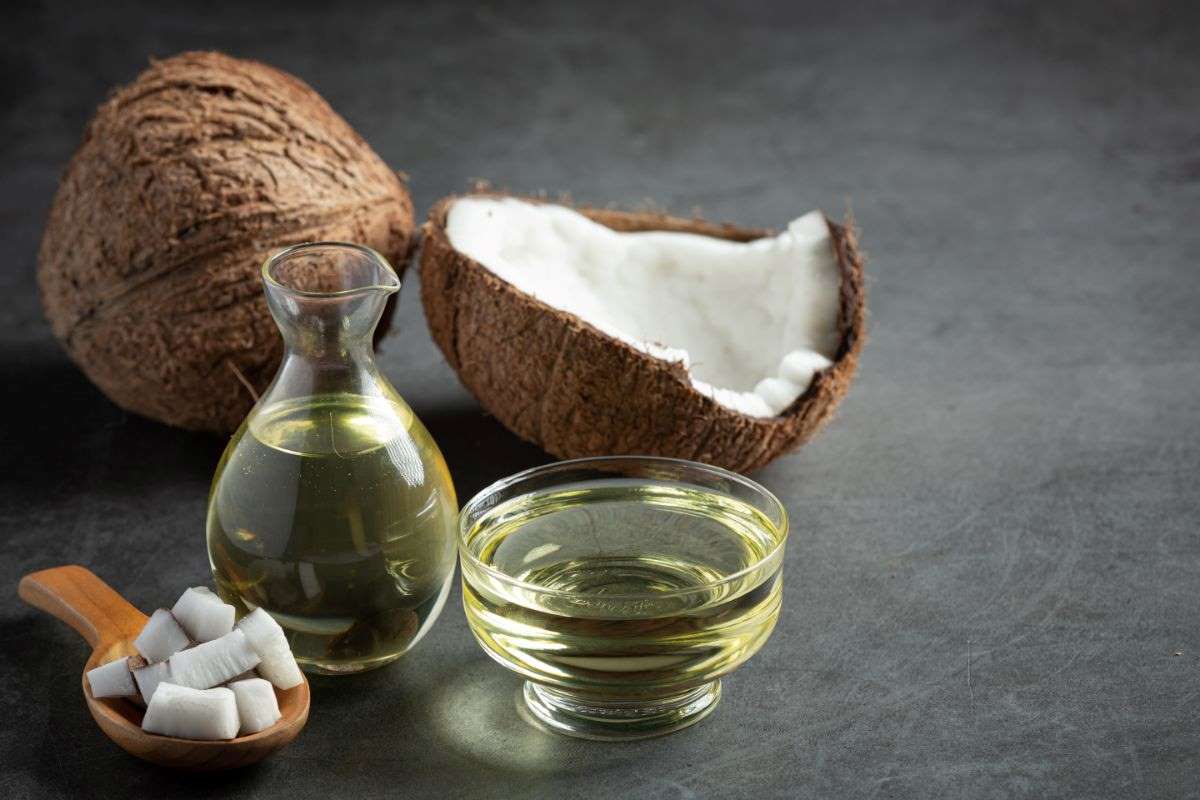Coconut oil is staple in many households in the kitchen and beauty routines. Its versatility, natural properties, and range of uses make it an ideal product for cooking, baking, skincare, and hair care. However, like all oils, coconut oil eventually reaches the end of its shelf life. Determining whether coconut oil has gone bad and storing it properly is essential for maintaining its freshness and effectiveness. This guide explains factors influencing coconut oil’s shelf life, how to identify spoilage signs, and best storage practices.
Does Coconut Oil Go Bad? Understanding Shelf Life
Coconut oil is distinctive among oils due to its long shelf life. However, this can vary depending on the coconut oil you use. Below, we break down the shelf life of the two most common types of coconut oil:
Unrefined Virgin Coconut Oil
Unrefined virgin coconut oil is acquire from fresh coconut meat and undergoes minimal processing. It retains the natural coconut flavor & aroma, making it popular choice for cooking & skincare applications. This type of coconut oil is known for its longer shelf life, typically lasting up to three years when stored under optimal conditions. Its high saturated fat content helps protect it from spoilage, making it more resilient over time.
- Flavor & Aroma: Retains a strong coconut flavor and aroma.
- Shelf Life: Up to 3 years, depending on storage.
Refined Coconut Oil
Refined coconut oil is manufacture from dried coconut meat, known as copra, and undergoes more extensive processing. This includes bleaching, deodorizing, and removing impurities, resulting in an oil with a neutral flavor and odor. Refined coconut oil typically has a shorter shelf life than virgin coconut oil, with an expiration period of around 18 months once opened. The refining process strips away some of the natural antioxidants, making it more vulnerable to oxidation.
- Flavor & Aroma: Neutral, with no coconut flavor or scent.
- Shelf Life: Around 18 months after opening.
Why Does Coconut Oil Go Bad?
Like all oils, coconut oil is susceptible to spoilage due to several factors. Understanding why coconut oil goes terrible is essential for preventing early degradation and maximizing your oil.
Oxidation
Exposure to air and light accelerates oxidation, which breaks down the fatty acids in coconut oil. This process forms free radicals—unstable molecules that can render the oil rancid. Oxidation decreases the quality and safety of the oil, making it unsuitable for use.
Heat
Prolonged exposure to heat can alter the chemical composition of coconut oil, causing it to spoil faster. Cooking with coconut oil at high temperatures can also break down its beneficial properties, decreasing its nutritional value.
Moisture
Even trace amounts of moisture can cause bacteria or mold to grow in coconut oil, especially when stored improperly. Keeping coconut oil dry is crucial to preventing these issues.
Contamination
Using dirty utensils or exposing coconut oil to contaminants can shorten its shelf life. Bacteria, dirt, and other substances can accelerate spoilage, reducing the oil’s effectiveness.
How to Tell if Coconut Oil Has Gone Bad
It’s essential to know the signs that your coconut oil has spoiled to avoid using it past its prime. Here are the key indicators:
Smell
The smell of coconut oil is often the first and most noticeable sign of spoilage. Fresh virgin coconut oil has a pleasant coconut scent. If the oil begins to smell sour, musty, or rancid, it has likely gone bad. Refined coconut oil, which should be odorless, may also show signs of spoilage if it emits unpleasant smells.
Appearance
Coconut oil should be white or slightly yellow and have a smooth consistency. If the oil has become cloudy, changed color, or developed floating particles or mold, it is no longer safe to use.
Texture
The texture of coconut oil can vary depending on the temperature. It is solid at cooler temperatures and melts when heated. However, if the oil appears grainy, curdled, or has an unusual consistency, it is a sign that the oil has deteriorated.
Taste
If you’re unsure whether your coconut oil is still good, a small taste test can help. Fresh coconut oil has a slightly sweet, nutty flavor. If the oil tastes sour, bitter, or off in any way, it’s best to discard it.
Best Practices for Storing Coconut Oil
Proper storage is key to prolonging shelf life of coconut oil and ensuring it remains fresh and compelling. Follow these tips to keep your coconut oil in optimal condition:
Seal Tightly
Permanently close the lid tightly after use. A tightly sealed container prevents air and light from entering, which helps to minimize oxidation. Consider using glass containers with airtight seals for the best preservation.
Store in a Cool, Dark Place
Coconut oil should be stored in cool, dark area away from direct sunlight & heat sources. Pantry or cupboard is ideal for storing coconut oil. Avoid placing it near stoves or windows where the oil can be exposed to heat or sunlight.
Refrigeration
In warmer climates, or if you want to extend the shelf life, storing coconut oil in the refrigerator can help. Keep in mind that coconut oil solidifies at lower temperatures, so allow it to return to room temperature before using it.
Use Clean Utensils
To prevent contamination, always use clean utensils when handling coconut oil. This minimizes the risk of bacteria, food particles, or dirt introducing contaminants that could cause spoilage.
Buy in Smaller Quantities
If you don’t use coconut oil frequently, buy smaller amounts to prevent waste. Smaller containers also help ensure that the oil is consumed before it has a chance to spoil.
Additional Tips for Using Coconut Oil Safely
In addition to the above storage practices, here are some extra tips to ensure your coconut oil remains effective and safe for use:
- Check Expiration Dates: Always check expiration date on the packaging before using coconut oil. This gives you an idea of the shelf life, even though coconut oil often lasts longer than its printed date.
- Monitor Storage Conditions: Periodically check that your coconut oil is being stored in the correct conditions. Adjust as necessary to maintain optimal freshness.
- Handle with Care: When using coconut oil for cooking or skin care, ensure your hands and utensils are clean to avoid contamination.
Conclusion
Coconut oil is a versatile and long-lasting product that can provide numerous benefits when stored properly. By following these simple tips—such as sealing the container tightly, storing it in a calm and dark place, and checking for spoilage—you can ensure that your coconut oil stays fresh and compelling for an extended period. Whether used for cooking, skincare, or haircare, knowing how to care for your coconut oil properly make sure you continue to enjoy its many benefits without concern.

















